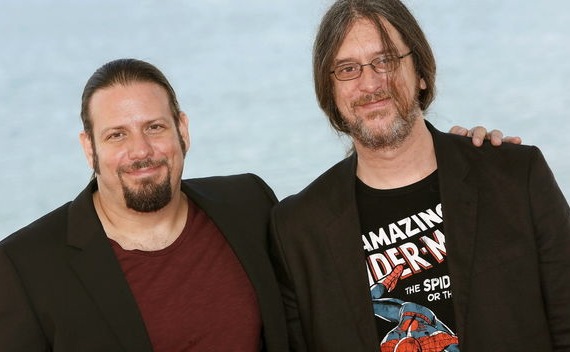Esteban Roel and Juanfer Andrés • Directors
“Álex de la Iglesia is one of our cinematic role models”
- Shrew’s Nest, the feature debut by Esteban Roel and Juanfer Andrés, is a thriller entirely shot indoors and produced by Álex de la Iglesia; it is currently competing at Sitges

Forty-five-year-old Esteban Roel is Mexican but has been living in Spain for the last 18 years. Meanwhile, Juanfer Andrés, 39, is from La Mancha. Together, not only have they directed the short films 036 and Es un buen chaval, but they also teach classes at the Madrid Film Institute. Their feature debut, Shrew’s Nest [+see also:
film review
trailer
interview: Esteban Roel and Juanfer An…
film profile], was screened at Toronto and Austin before touching down in the “Oficial Fantàstic” section of the 47th Sitges International Fantastic Film Festival.
Cineuropa: Have you been in an artistic partnership for a long time?
Esteban Roel: For years we’ve been like a kind of gang: the same crew that we shot the shorts with went on to make Shrew’s Nest. Plus, Sofía Cuenca, the co-screenwriter who worked with Juanfer, is a former student of ours.
Juanfer Andrés: The film is based on a short that we shot at school years ago: we were thinking about doing a cheap and containable project, with just a handful of characters and only one location, as we tend to keep things simple.
How did you end up collaborating with Álex de la Iglesia?
ER: We worked with Carolina Bang, his wife and co-producer, here, on 036, and it was through her that Álex got to read the script – he saw that it had potential and he said he wanted a big film. He helped to assemble the very strong cast: Hugo Silva, Luis Tosar, Macarena Gómez...
JA: We felt like Álex was being really supportive; he got in touch with us because he saw things he liked. We were fans of his, and he is one of our cinematic role models.
Did you film on set or in real flats?
ER: We filmed in half-abandoned flats in Madrid. We rented out two of them, with the producers set up in the one underneath. We were considering building a set, but in the end I think the space limitations were a good thing: they made us tell the story in a very genuine way because the crew was crammed in, just like the characters, although we did manage to move around very easily in there, and we were even able to set up a dolly in the corridor. It was like a proper maze, and several of the walls were originals, so they had lots of character. The house, which the lead character Montse never goes out of, is another character in the movie.
JA: That’s why we wanted it to be real and to create a sense of claustrophobia.
Why did you set it in the 1950s and not in the present day?
JA: In a lot of versions of the script, the story took place in modern times...
ER: But we realised that now, with mobile phones and GPS, if you disappear for more than 24 hours, someone will come looking for you. On the other hand, at that time, if a guy wasn’t at home, it would have been more believable that a woman could be holding him prisoner for at least five days, which is what happens in the movie.
JA: Plus, at that time, an 18-year-old girl, like the one played by Nadia de Santiago, was a completely different kind of person to how she would be today. If the plot was going to work at all, it was essential for the sisters to need each other. The elements of the screenplay worked better at that time: Montse’s illness, the religious connection, the chauvinism imposed by the family itself...
ER: Also, I think it improves the aesthetics of the film, with the make-up, hairstyles, wardrobe and energy of the characters: we’re now living at a time of increasing openness; it boosts the believability of such a horrific story if it unfolds back then.
(Translated from Spanish)
Did you enjoy reading this article? Please subscribe to our newsletter to receive more stories like this directly in your inbox.
















